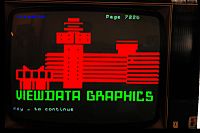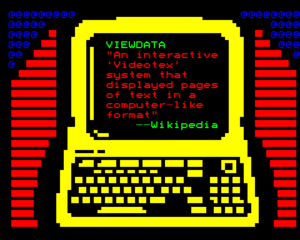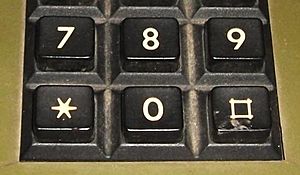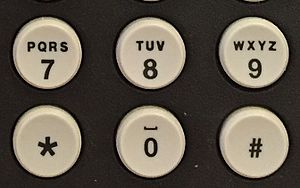Viewdata facts for kids

Viewdata graphics from an experimental phone directory in 1977. This picture shows the Post Office/British Telecom research labs in Suffolk, England.
|
|
| Developer | Samuel Fedida, Post Office |
|---|---|
| Type | Videotex |
| Launch date | 1974 |
| Platform(s) | Viewdata |
Viewdata was an early way to get information from a computer database using a phone line. It was like an early internet service. Users could connect to a distant computer system. They would ask for information and see it on a screen.
Samuel Fedida first thought of Viewdata in 1968. He is known as the inventor of this system. He worked for the British Post Office, which ran the country's phone system. The first working version of Viewdata was ready in 1974.
Contents
How Viewdata Technology Worked
Viewdata screens showed text in a simple way. Each screen could display 40 characters across and 24 lines down. This was a common way to show text back then.
To use Viewdata, you needed a special machine called a terminal. It was like a simple computer. This terminal connected to a modem, which sent data over phone lines. The modem sent data to you at 1,200 bits per second. It sent data from you at 75 bits per second.
Later, people could use Viewdata on their personal computers. They used special software or a website that acted like a Viewdata terminal. This made it easier to access the service.
Viewdata in the Travel Industry
Even in 2015, Viewdata was still used in the United Kingdom. It was mostly used by people who work in the travel business. Travel agents used Viewdata to find out prices and if holidays were available. They could also check flights.
Once they found what a customer wanted, they could book the trip. There are a few reasons why the travel industry kept using Viewdata. Many people thought it was cheap and dependable. Travel agents were already trained to use it. Also, holiday companies could not agree on a new internet-based system.
Viewdata and Bulletin Boards
Viewdata was created in the late 1970s and early 1980s. It helped travel agents check and book holidays more easily.
Many Viewdata bulletin board systems (BBSs) were popular in the 1980s. These were like early online communities. They were very common in the UK. This was partly because of the BBC Micro computer. A small "Viewdata Revival" happened in the late 1990s. This was when people became interested in old computers again. Some Viewdata boards still exist today. You can access them using special programs on the internet.
Special Keypad Symbols
| ⌗ ⚹ | |
|---|---|
|
Viewdata keypad symbols
|
|
| In Unicode | Error using : Input "26B9" is not a hexadecimal value. Error using : Input "2317" is not a hexadecimal value. |
| Different from | |
| Different from | Error using : Input "002A" is not a hexadecimal value. Error using : Input "0023" is not a hexadecimal value. |
Viewdata used two special symbols found on phone keypads. These are the ⚹ "star" key and the ⌗ "square" key. These symbols were officially set by the International Telecommunication Union.
These symbols are often treated like the asterisk (*) and number sign (#) you see on computer keyboards. However, the phone keypad symbols are a bit different. The asterisk is usually smaller and higher up than the star key symbol.
These special symbols have names in computer code. The star is called 'Sextile'. The square is called 'Viewdata square'. The sextile was added to computer code because it is used in astrology. The square was used in an older Viewdata character set. It took the place of the underscore symbol.
See also
- Prestel
- Telstar Viewdata




